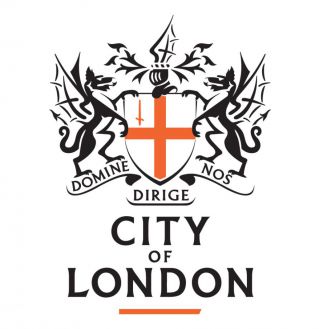New London Architecture
From big to small: The changing face of London post-COVID
Monday 28 September 2020

Glasshouse streetview day planters
A rich history for a richer future. Fifteen years ago, the arrival of the New London Architecture (NLA), its research and exhibitions filled a long overdue gap. It has become an essential physical and virtual focal point for London, akin to earlier innovators, such as the Paris Arsenal. It remains a professional and public education facility where issues of London past, present and future can be analysed and updated.
The launch exhibition in 2005 had many fine example projects across the London boroughs, demonstrating from that time, the rising range and quality of new infrastructure, architecture and landscape across the city. Since then, much has been achieved in London – some big ambitions are still in process or awaited and others have been derailed or stalled.
And then in March, London, and the world, was shook to its core.The Covid-19 emergency questions much of London’s World City leadership as well as any design preconceptions of current and future work in the city. What we thought were our priorities for projects and city improvements has fundamentally shifted. From the street level up to tall buildings, we are rethinking London’s future.
The risk is, our city moves backwards instead of forwards. For example, the success of the past in decluttering city streets now sees streets re-cluttered with temporary barriers and inadequate weather protected alfresco design responses to accommodate social distancing. Commercial buildings, both those currently owned and leased, or intended for development, are being questioned in terms of market viability – if more people stay home, can we sustain these kinds of large developments? But these developments are, historically, what have made our city what it is.
Regent Street temporary barriers
Regent Street temporary barriers

What’s next? NLA’s The Changing Face of London report not only reviews the past 15 years but looks forward to the next era of London issues, public authorities, politicians, professionals and the public. It encourages us all to re-examine what we need from our city, lessons learnt and new criteria for the city’s priorities: scales of funding, delivery and quality in a less healthy, much-changed competitive era for investors and stakeholders.
Will uncertainty and lack of confidence (the familiar economic negatives) win the day? Or will we look to the successes of the past to undo conventional over-ambitious mega projects?
A strategy of “small is beautiful” projects,may have found its new time, one which could meet the needs of London’s recovery and reimagined priorities. The financial leverage of added value of such an approach has often been overlooked, overshadowed or commercially concealed within much larger projects in ‘old normal’ times.
In this ‘new normal’ we need to focus on a return to the proven, tested urban tools, from regeneration and conservation to retrofitting and environmentally sustainable design. Public realm improvement, new pocket parks and green street links between established parks and gardens, with new and restored external spaces and places for added heritage value, arts (more weather protected, open-air theatre/cinema/exhibitions) and culture should all be publicly promoted with catalyst funding.
Awaiting private developments and major new infrastructure and funding, which has been the route in the last 15 years, may not be reliable and quick enough in our post-COVID world. We can create these improved spaces and places between developments, without being reliant on London’s large development programme coming to fruition.
These smaller projects are not only less costly and complex, but they can help us deliver long-awaited community placemaking (not least ideas of locally relevant, better diversity of the public arts, sculpture, statues and memorials). With stakeholder support, these projects could help our city rapidly, in reasserting and delivering more of the human priorities for London and its much-needed visitors.
The Covid-19 lessons have highlighted London’s deficiencies and vulnerabilities. Now is the time to re-imagine its success, across culture, history, lifestyles, urban living and prosperity.
Related
News
Winning Design Announced for 'Hope in the Square' Competition
NLA in partnership with the London Borough of Southwark are proud to unveil the winning design of our 'Hope in the Squar...
Exhibition
At 16.5 metres-long, the 1:2000 scale London model covers more than 247 square kilometres of London and 21 boroughs, 21...
Stay in touch
Upgrade your plan
Choose the right membership for your business
Billing type:
Small Business Membership
£90.00
/month
£995.00
/year

For businesses with 1-20 employees.
Medium Business Membership
£330.00
/month
£3,850.00
/year

For businesses with 21-100 employees.
View options for
Personal membership


















